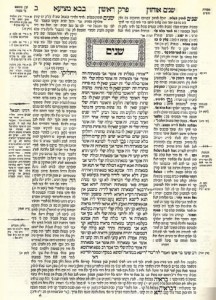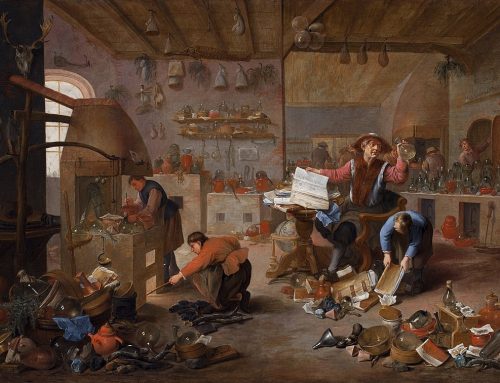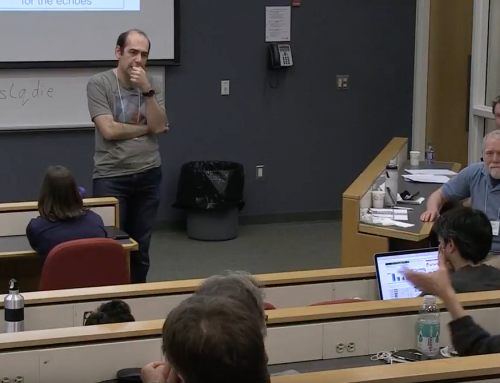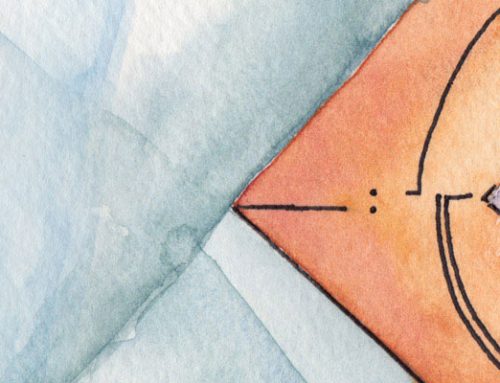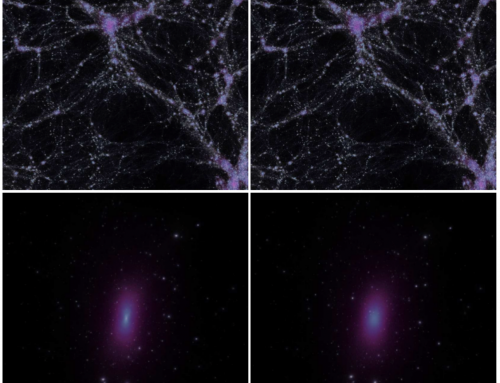Wayne C. Myrvold
80 years ago, in the May 15, 1935 issue of Physical Review, a remarkable paper was published, whose impact on our thinking about the world has been substantial, in ways that would, perhaps, have astonished the authors. The paper was concerned with a very abstract point about the nature of physical reality. But years of development of the line of thinking in that paper have not only deepened our understanding of quantum mechanics; a variant of the (then thought-, now real) experiment discussed in it has been found to be useful for such matters as secure cryptographic key distribution and random number generation (more about this in a follow-up guest post, next week).
The paper was entitled “Can Quantum-Mechanical Description of Physical Reality Be Considered Complete?” The authors were Albert Einstein, Boris Podolsky, and Nathan Rosen (EPR). For reasons of language, the text was by Podolsky, and Einstein himself wasn’t happy with the way it came out. The main point was somewhat obscured by unnecessary details of the example used; Einstein’s own presentations of the main point were more succinct and eschewed particular examples.
There are editions of the Talmud that have the Mishnah, the primary teachings, in the center, with two sets of major commentaries surrounding it, and secondary commentaries in the margins. This is how I see the literature on the foundations of quantum mechanics. At the center is the EPR paper. Next are the two great commentators: Schrödinger was prompted by EPR to write a seminal pair of papers on entanglement (1935a, 1936), and also the famous “cat” paper (1935b). And John Stuart Bell’s paper, which contains what has come to be known as Bell’s theorem, was entitled. “On the Einstein-Podolsky Rosen Paradox” (1964). Much of the work on foundations of quantum mechanics can be thought of as commentary on those.
The content of the EPR paper is often misrepresented. (For example, an introduction to a 2005 reprint of the paper in Physical Review Focus, marking the 70th anniversary of the paper, begins “In 1935 Einstein and his co-authors claimed to show that quantum mechanics led to logical contradictions….” No, they didn’t!) There is a persistent myth that Einstein disliked quantum mechanics, and tried to show that it was wrong. In fact, he liked the theory very much! If you look at his recommendations for Nobel Prizes (published in the Appendix of Abraham Pais’ biography of Einstein, Subtle is the Lord…), you will find that all of the recommendations he made for theoretical work, after the birth of quantum mechanics, were concerned with honouring the founders of quantum theory. Einstein’s view, expressed most cleanly in a short article, “Quantum Mechanics and Physical Reality,” published in 1948, was that “Quantum Mechanics represents an important and in some sense even conclusive advance in physical knowledge.” He didn’t, however, regard it as the full story, “I imagine that this theory may well become a part of a subsequent one, in the same way as geometrical optics is now incorporated in wave optics: the inter-relationships will remain, but the foundation will be deepened or replaced by a more comprehensive one.” This is not an attitude of disdain! It’s pretty much the attitude he held towards the Special Theory of Relativity; an advance, but not a final step, but something to be incorporated into a more comprehensive theory.
So, then, what was the EPR paper about? It was, first and foremost, about whether the quantum wavefunction could be taken as a complete description of physical reality. At first glance, the quantum wavefunction seems to be something like a classical field (and that is what de Broglie hoped it would be). But, as Einstein pointed out already in the discussions at the 1927 Solvay Conference (see Bacciagaluppi and Valentini 2009), it doesn’t act like a field, when it comes to spatially separated experiments. In those discussions he imagined an electron-wave spreading out and impinging on a photographic film. On the usual interpretation, the square of the wavefunction gives the probability for the location at which the electron will be detected. But, if the electron is absorbed at a point of the film, producing a dot, the probability is zero that it will be absorbed anywhere else. Are we to imagine a field that is, at one moment, spread out across the screen, then suddenly becomes zero everywhere? That is not how classical fields behave, and it is considerations of this sort that encourage the idea that quantum wavefunctions represent, not physical reality directly, but our knowledge of it.
The later versions of the incompleteness argument involve two spatially separated systems in an entangled state. (The Solvay version also involves entanglement, but that’s less obvious. See Norsen 2005 and Norton 2011 for discussion. ) Following modern practice, suppose these separated systems are in the labs of Alice and Bob. The entangled state can be written in different ways as superpositions of products of states of Alice’s and Bob’s systems. Alice, by making a choice of what experiment to do, can project the state onto one of the elements of one of these superpositions. This, on the usual way of reading things, leaves Bob’s system in different quantum states, depend on Alice’s choice of experiment. But one would expect that Alice’s choice has no immediate effect on local states of affairs in Bob’s lab. This leads us to the conclusion that one could end up using different quantum states for one and the same physical state of Bob’s system, and, if that’s right, the quantum state we use is not a complete description of the physical state of Bob’s system.
As Don Howard (1985) has shown, there are two sorts of “localness” assumptions at play here. One is the condition of Locality, or of local action: events don’t have immediate effects at a distance; the effect of an event propagates continuously through space. The other is Separability, an assumption basic to classical physics, namely, that the physical state of a system that has two spatially separated parts can be specified by completely specifying the states of their parts. In my opinion, the incompleteness argument requires both assumptions to go through (but I’m not going to argue that in a blog post). But, if that’s right, one can accept that a quantum theory is complete without also accepting action at a distance. (There is a sort of spooky nonlocality, but not spooky action-at-a-distance.)
A theory that supplements the quantum state description with something else is often called a hidden variables theory. The best-known way of doing this was presented by de Broglie at the 1927 Solvay conference and rediscovered by David Bohm a quarter-century later. Einstein didn’t find that particular way of doing things satisfactory (and he presented his reasons in a contribution to a volume honouring Max Born; see Myrvold 2003 for discussion). Einstein never did find a hidden-variables theory that he did regard as satisfactory. It was, in my opinion, a worthwhile question to ask whether there could be such theory. In 1966 J.S. Bell published a lovely paper entitled “On the Question of Hidden Variables in Quantum Mechanics” (written earlier, but published later, than the Bell Theorem paper), where, one by one, he examines purported no-go theorems for hidden-variables theories and finds them wanting, including the theorem that would later be called the Kochen-Specker theorem. He has a card up his sleeve; he knows there can be no definitive no-go theorem because we have, in fact, a working hidden-variables theory in the de Broglie-Bohm theory. At the end of the paper he discusses the de Broglie-Bohm theory, makes note of its nonlocality, and raised the question whether any theory of that sort would have to be a nonlocal theory, a question addressed in the follow-up paper, in which he shows that any theory that satisfies certain locality conditions would have to have predictions that satisfy some inequalities, called Bell Inequalities, which are violated by the quantum predictions.
These predictions can be tested, and have been tested, vindicating quantum mechanics (significant experiments include Aspect et al. 1982; Tittel et al. 1998, Weihs et al. 1998). Do these experiments prove Einstein wrong? Well, they do prove that the sort of theory that Einstein envisaged, satisfying the conditions of Separability and Locality, is not a viable option. But Einstein had no way of knowing that. The closing words of the 1948 paper are wise, I think.
As it appears to me, there can be no doubt that the physicists who hold the quantum mechanical manner of description to be, in principle, definitive, will react to these considerations as follows: They will drop requirement II of the independent existence of the physical realities which are present in different portions of space; they can rightly appeal to the fact that the quantum-theory nowhere makes explicit use of this requirement.
I grant this, but note: if I consider the physical phenomena with which I am acquainted, and especially those which are so successfully comprehended by means of quantum-mechanics, then, nevertheless, I nowhere find a fact which makes it appear to me probable that one has to give up requirement II. For that reason I am inclined to believe that the description afforded by quantum-mechanics is to be viewed … as an incomplete and indirect description of reality, that will again be replaced later by a complete and direct description.
In any case, one should be on guard, in my opinion, against committing oneself dogmatically to the schema of current theory in the search for a unified basis for the whole of physics. (Quoting from translation in Howard 1985).
I think he’s right about this; in 1948 nobody was able to point to a physical phenomenon that suggested that we would have to abandon the requirements of Locality and Separability. Things are different now, and they are different because of Einstein’s reflections on quantum mechanics; Bell’s theorem, and the subsequent experimental tests of the Bell Inequalities, do give us reason to think that an adequate physical theory will be, in some sense, nonlocal. But we might not have learned this were it not for Einstein’s writings on quantum mechanics.
References
Aspect, A., J. Dalibard, and G. Roger (1982). “Experimental test of Bell’s inequalities using time-varying analyzers.” Physical Review Letters 49, 1804-1807.
Bacciagaluppi, Guido, and Valentini, Antony. 2009. Quantum Theory at the Crossroads: Reconsidering the 1927 Solvay Conference. Cambridge: Cambridge University Press.
Bell, John S. (1966). “On the Problem of Hidden Variables in Quantum Mechanics.” Reviews of Modern Physics 38, 447-52. Reprinted in Speakable and Unspeakable as Ch. 1.
—– (1964). “On the Einstein-Podolsky-Rosen Paradox.” Physics 1, 195-200. Reprinted in Speakable and Unspeakable as Ch. 2.
—- (1987, 2004). Speakable and Unspeakable in Quantum Mechanics. Cambridge University Press.
Einstein, Albert, Boris Podolsky, and Nathan Rosen (1935). “Can Quantum-Mechanical Description of Physical Reality Be Considered Complete?” Physical Review 47, 777-780.
Einstein, Albert (1948). “Quanten-Mechanik und Wirklichkeit.” Dialectica 2, 320-324.
Howard, Don (1985). “Einstein on Locality and Separability.” Studies in History and Philosophy of Science 16, 171-201.
Myrvold, Wayne C. (2003). “On some early objections to Bohm’s Theory.” International Studies in the Philosophy of Science 17, 7-24.
Norsen, Travis (2005). “Einstein’s boxes.” American Journal of Physics 73, 164–176.
Norton, John D. (2011). “Little boxes: A simple implementation of the Greenberger, Horne, and Zeilinger result for spatial degrees of freedom.” American Journal of Physics, 79, 182–188.
Pais, Abraham (1982). Subtle is the Lord. Oxford University Press.
Schrödinger, Erwin (1935a). “Discussion of probability relations between separated systems.” Proceedings of the Cambridge Philosophical Society 31, 555-563.
—- (1935b). “Die gegenwärtige Situation in der Quantenmechanik.” Die Naturwissenschaften 23, pp.807-812.
—- (1936). “Probability relations between separated systems.” Proceedings of the Cambridge Philosophical Society 32 ,446-452.
Tittel, W., J. Brendel, B. Gisin, T. Herzog, H. Zbinden, and N. Gisin (1998). “Experimental demonstration of quantum correlations over more than 10 km.” Physical Review A 57, 3229-3232.
Weihs, G., T. Jennewein, C. Simon, H. Weinfurter, and A. Zeilinger (1998). “Violation of Bell’s inequality under strict Einstein locality conditions.” Physical Review Letters 81, 5039-5043.

